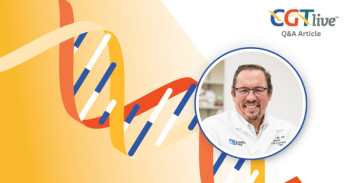
Predictive Value Examined Among Genomic Tests for Breast Cancer
Multiple gene signature assays have been developed that supply prognostic information for decisions on adjuvant chemotherapy and whether therapy should be of extended duration.
Harold J. Burstein, MD, PhD
As genomic signature identification has become a routine part of contemporary breast cancer management, multiple assays have been developed that supply prognostic information for decisions on adjuvant chemotherapy and whether therapy should be of extended duration, Harold J. Burstein, MD, PhD, said in a presentation at the 2018 Lynn Sage Breast Cancer Symposium in Chicago. A few of those tests have predictive value, he added.
“Estimates and assays that integrate traditional known risk factors and genomic information allow better prognostication,” said Burstein, an associate professor of medicine at Harvard Medical School and a medical oncologist at Dana-Farber Cancer Institute and Brigham and Women's Hospital, in Boston, Massachusetts. “The recurrence score, in particular, is very helpful for ruling out the benefit of adjuvant chemotherapy for patients with N0 and N1 disease.”
Genomic assays usually correlate closely with one another and with traditional pathology, Burstein said at the conference, which was organized by Northwestern University’s Robert H. Lurie Comprehensive Cancer Center. “The clinical heterogeneity in ER-positive breast cancer is largely at the level of the transcriptome,” he said. “This is why traditional pathology correlates very well with gene signature assays. This includes grade, hormone receptor status, and Ki67, all of which are reflections of gene expression.”
Burstein explained that how clinicians made adjuvant treatment decisions 20 years ago is in stark contrast to today’s genomically driven decision-making environment. First, they estimated the prognosis based on the natural history of the disease. Next, clinicians applied the proportionate risk reduction they expected adjuvant therapy to provide. After quantifying the expected absolute gains, they discussed with the patient whether pursuing this therapy was worth it to them. “So, if the patient had a 25% chance of recurrence and a 25% relative risk reduction from chemotherapy, that yielded a 6% absolute improvement,” he said. “It all seemed straightforward, but we didn’t know as much as we thought we did.”
One of the problems was that clinicians were not good estimating risk, he said. Genomic assays have changed that aspect of the equation. Now, “you can confidently tell patients when they will receive absolutely no benefit from chemotherapy,” Burstein said.
Burstein summarized the prognostic and predictive value of 5 widely used assays. Specifically, he focused on whether each one can help determine whether adjuvant chemotherapy is advisable and how long therapy should last. The Oncotype DX Breast Recurrence Score (RS) test, MammaPrint, PAM50, EndoPredict, and Breast Cancer Index (BCI) are all prognostic; however, the RS has superior predictive value of response to therapy, Burstein said.
RS can aid in the decision to recommend adjuvant chemotherapy for patients with N0 and N1 nodal involvement. MammaPrint can too, but only in conjunction with clinical information about the patient. PAM50, EndoPredict, and BCI cannot inform decision-making regarding adjuvant chemotherapy, Burstein said.
MammaPrint does not provide useful data for determining the duration of adjuvant chemotherapy. “The others inform general prognosis without directly predicting the benefit of a longer duration of treatment,” Burstein said. “We now know that the same markers that identify the risk of early recurrence also identify the risk of late recurrence.”
In recent years, a variety of trials have been published that lend credence to the prognostic and predictive value of nodal status, tumor size, tumor grade, and patient age. “Nodal stage remains a powerful predictor, and [also considering] tumor size allows us to refine our decisions,” Burstein said.
Even with the power of genomic assays, conflicting information may complicate decision-making. “Management challenges are still posed by cases in which risk management is discordant between the patient’s stage and genomic assay,” Burstein said. Effort will be required to put these issues into perspective for patients. “Framing these issues is a key task for the clinical team in reaching shared decisions with patients.”
Burstein said genomic assays will likely evolve into something of much greater value. “To date, genomic assays have answered only a tiny percentage of the possible questions we deal with in breast cancer clinical practice. I think there’s much more to come in the future.”
Burstein HJ. Genomic tests for adjuvant therapy decision making: Which one is best? Presented at: Lynn Sage Breast Cancer Symposium; Chicago; October 11-14, 2018.
Newsletter
Stay at the forefront of cutting-edge science with CGT—your direct line to expert insights, breakthrough data, and real-time coverage of the latest advancements in cell and gene therapy.































